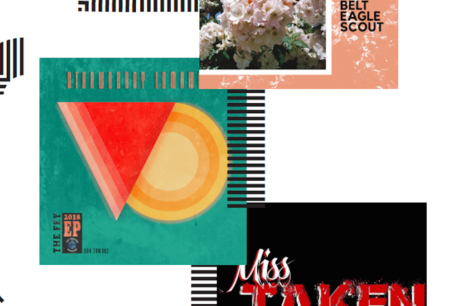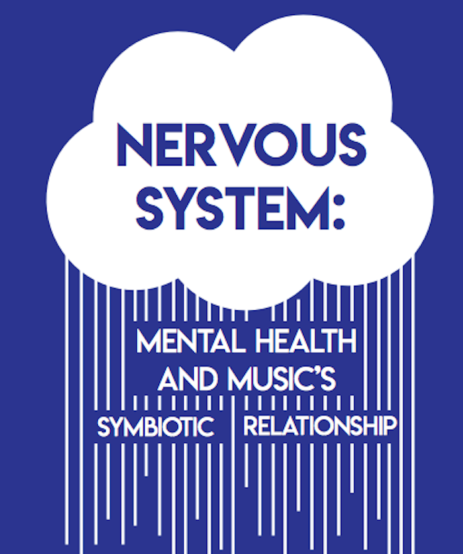Often, when people are sad, they listen to music. It calms. It excites. It opens the mind up to new possibilities. To put it simply, music has the power to make people feel better. When looking into it more, however, exactly how much influence it can have on the brain may be quite surprising.
Mental health and musical fields have an intertwining relationship that is often taken only at face value. You hear it time and time again, that “such beauty comes from such tragedy.” This, however, simplifies a strong connection into a generalization. It ignores the nuances within the overwhelming, interconnecting network between songs and mental health. It also implies that people with mental illness are tragic figures and that their illness defines them and their work — not the other way around.
One artist trying to push back against this generalization is classical musician Tanya Gabrielian (35). She’s been playing piano since she was three years old and has expanded her music into activism, earning praise from the The Washington Post and The New York Times. In her performances, she showcases composers who had mental illnesses, such as Beethoven, Chopin and Sergei Rachmaninoff, which she said creates an opportunity to start a dialogue with attendees about mental health. Not only does this help reduce the stigma surrounding mental health, but it also brings forth the power music can have.
“I want to use music instead as an equalizer,” Gabrielian says. “[I want to] show that music is so powerful because it shows us that we all have so much in common, regardless of our mental health, gender, age, ethnicity, sexual orientation and so on. That’s why the same music has remained relevant through centuries.”
The works Gabrielian performs are created by masterful minds, not broken ones. The composers’ pieces prove the dynamism the arts have, both internally— for the artist — and externally — for the listener. What’s spectacular about this relationship between the arts and mental health is that you don’t have to create art to reap its benefits. Sometimes, the artist does the work for you.
Music therapy is a relatively new technique that came about professionally in the mid-20th century. It helps with both physical and mental illnesses. In music therapy, licensed professionals use music to help tackle goals specific to the individual. Nicole Jacobs, the director of music therapy at Concordia University, Nebraska, described it as using music as a tool to address non-musical issues. Therapists focus on music’s therapeutic nature and focus it in order to maximize its healing potential. Music therapy combines both listening to and creating songs. Some main techniques include analyzing lyrics, active listening, improvisational playing and songwriting.
Jacobs deals with using music therapy with in-patient care. This means she teaches patients techniques in how they can use music to help them after they leave her office. The methods used may often vary on whether the patient already has a musical background.
If so, the therapist may utilize songwriting more often, whereas, if the patient has little practice, he or she may use strategies more like lyric analysis. Differing patient needs also influence melodies and methods used. In music therapy, patients can express thoughts and feelings in ways that may be too difficult to do with words. Often, they can emote more freely and honestly through listening and creating. Part of the comfort in music therapy, Jacobs said, is the ease that comes with it.
“We all use music every day, so it’s a familiar thing,” Jacobs says. “A lot of the times, it doesn’t feel like therapy. It just feels like they’re playing music.”
Music therapy research shows that it helps with mental illnesses such as depression, anxiety, schizophrenia and substance abuse. It acts as a calming agent for overactive minds, reduces heart rate and releases endorphins. Because no one particular part of the brain is “in charge” of music, it can be used to intersect the different pathways, Jacobs says.
A 2017 review written for Frontiers in Psychology discusses 28 separate scholarly articles discussing the effects of music therapy. It finds that 26 of these studies showed significant results in reducing depression.
Fortunately, support for music therapy and using art to aid with mental health has increased over the years. As the conversation around destigmatizing mental illnesses grows, so does talk of how to help people experiencing them. People are realizing the arts are legitimate aids in calming their minds.
Increasing awareness of mental illnesses through music is central to Gabrielian’s goal. Her focus lies more in showing that underneath it all, people are inherently the same, regardless of mental status. She doesn’t look into the healing properties of music, but she does recognize the power it has. Gabrielian hopes to showcase music’s power during her performance at the University of Nebraska-Lincoln in October, where students and Lincolnites can experience Gabrielian’s mission firsthand.
“A performance is an opportunity to bring people together, and becoming part of a community is integral for general wellness,” Gabrielian says. “And with mental illness, it’s crucial to address the stigma around the issues, increase understanding, provide care and resources and to involve a community to promote inclusivity, rather than the feelings of isolation that mental illness creates.”
By musicians like Gabrielian showcasing mental health in the arts, more artists experiencing mental illnesses can get their work seen. Art galleries are popping up across the nation that feature these artists and their work.
The Mental Arts Festival, which happened this past August in London, celebrated all types of art created by those struggling with mental illnesses. Without others speaking up in support, major events like these may not exist.
Music’s healing powers go beyond a temporary mood boost. It can help deeper psychological issues through both appreciation and creation. It can open up a dialogue on important issues, such as the stigma surrounding mental illness, and create lasting change. Realizing the possibilities for internal healing helps people in dealing with struggle. It helps them reach a sense of harmony.



